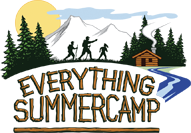Hey, Camp Fans!
Like all other junctures in life, summer camp stays are not immune to unfortunate illnesses or mild wounds. That’s why summer camps are sure to have a nurse on hand throughout their summer sessions. Well-versed with tummy aches, bee stings, and all other inopportune ailments that may befall you, camp nurses are the nicest people on the planet.
Always sure to treat their patients with the utmost care and empathy no matter  what’s wrong with them, camp nurses—and nurses in general—deserve a dedicatory day. Which is why they have one—TODAY! May 6th is National Nurse Day. A great day to show your appreciation toward the many nurses of the world, this day actually stretches outward a week and ends on May 12th, the birthday of Florence Nightingale.
what’s wrong with them, camp nurses—and nurses in general—deserve a dedicatory day. Which is why they have one—TODAY! May 6th is National Nurse Day. A great day to show your appreciation toward the many nurses of the world, this day actually stretches outward a week and ends on May 12th, the birthday of Florence Nightingale.
Even if you don’t know who Florence Nightingale is, you’ve likely heard of her before (and who could forget a name like that?). Ms. Nightingale was born back in 1820. Considered the founder of modern nursing, Florence became recognized while tending to the injured soldiers of the Crimean War between France and Russia in the 1850s.
With increasing popularity, soldiers started referencing Florence as ‘The Lady with the Lamp’ since she would regularly make her rounds at night. And now her birthday is honored every year as National Nurse Week comes to a close.
When you head off to summer camp, be sure to thank your camp nurse for her assurance of your well-being and her ever-kind manner. On behalf of Everything Summer Camp, we’d like to send out a giant thank you to camp nurses, school nurses, clinical nurses, emergency room nurses, and all other kinds. You truly help people on a daily basis!
Be sure to show your appreciation for the nurses in your life today and, as always, thanks for reading.
- John






